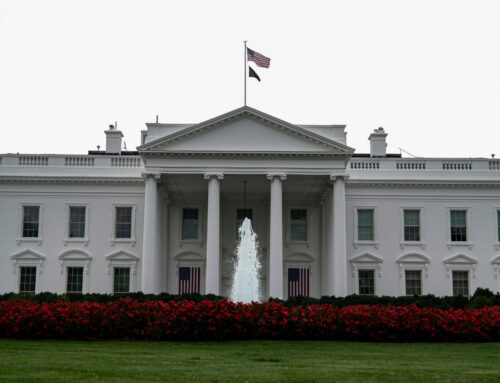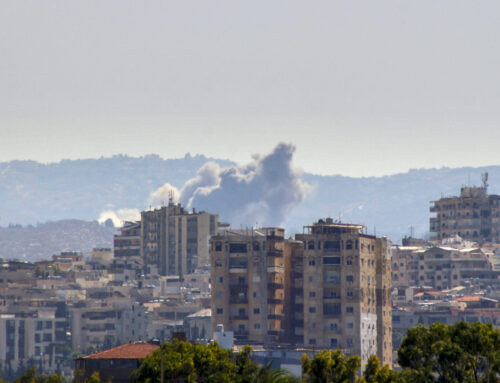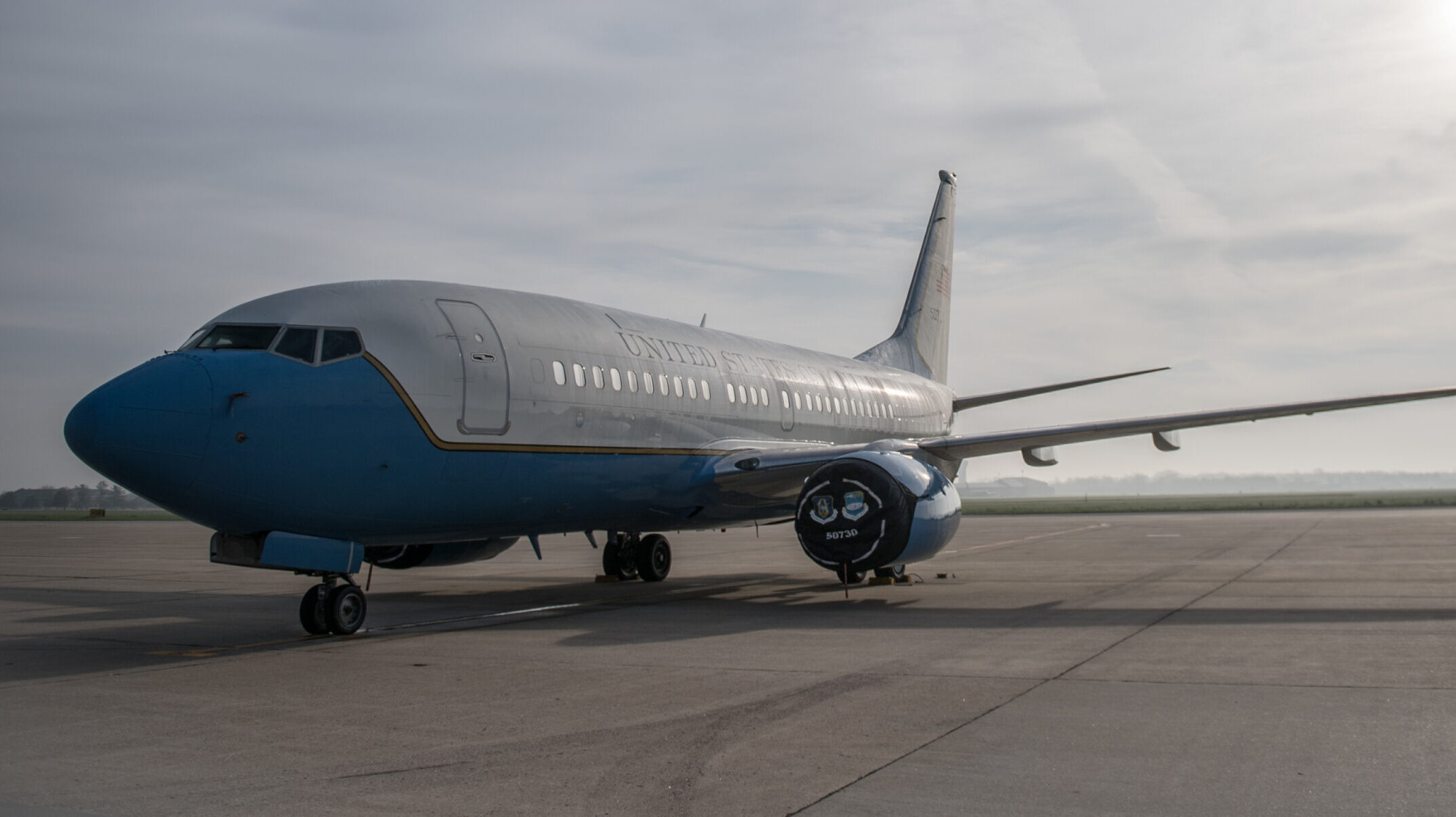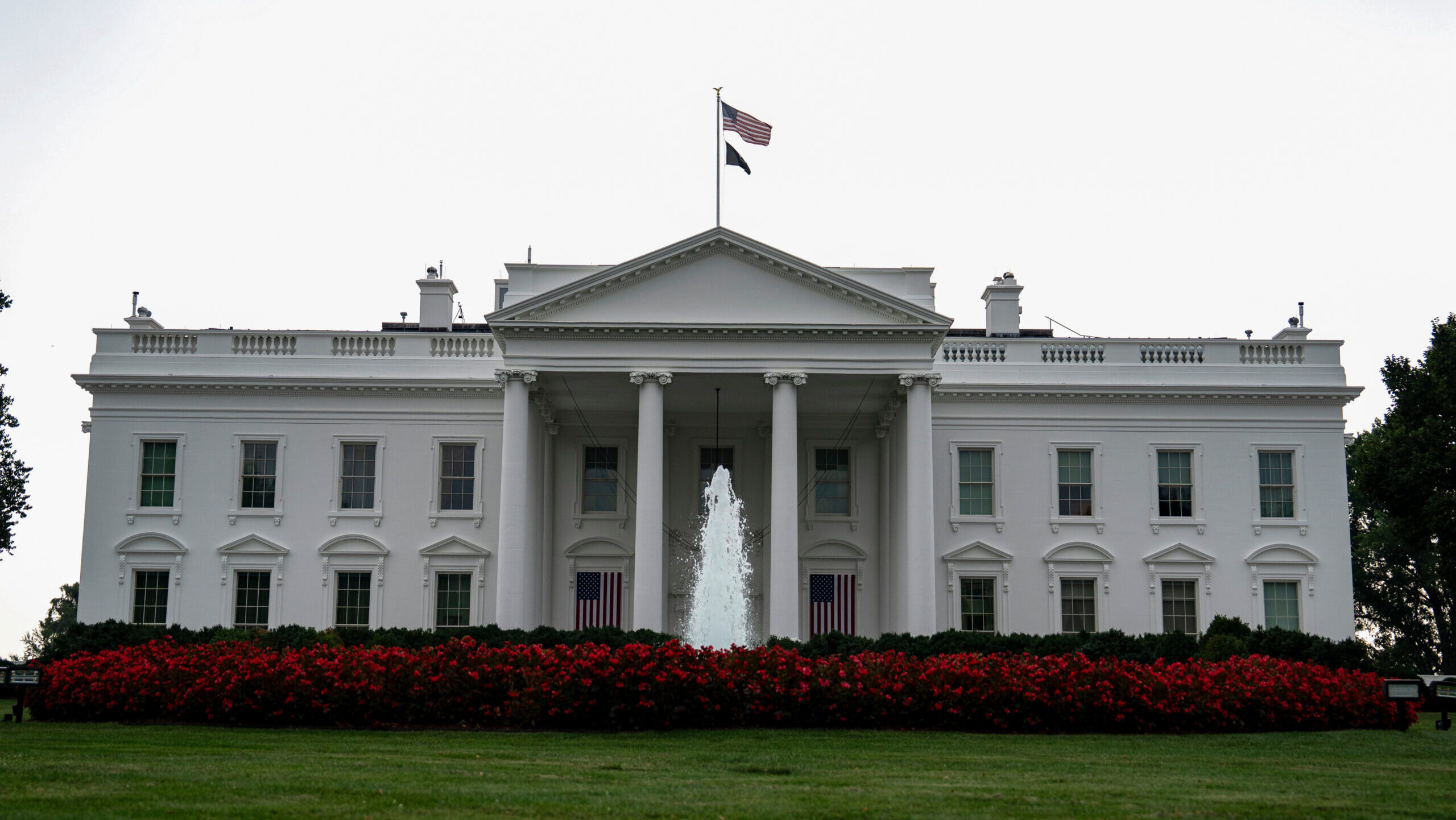A full-sized model of General Atomics’s Collaborative Combat Aircraft (top) and Anduril’s (bottom) on display at AFA 2024 on Sept. 20, 2024. (Breaking Defense photos)
WASHINGTON — On the exhibit floor of the Air Force’s biggest conference last week, two full-sized models of next-generation combat drones squared off amid a maze of defense contractor booths, drawing crowds that included the head of the Air Force.
On one side, the Fury, built by defense tech startup Anduril. On the other, a variant of the Gambit family of drones built by General Atomics, a pioneer of the unmanned systems industry.
It’s a scene that, 20 years ago, would be almost inconceivable for the fighter-jet obsessed Air Force, then still in the nascent stages of adopting unmanned aircraft for mostly surveillance missions.
The drones on display are the first iteration of what the Air Force has said is a generational leap in air dominance: Collaborative Combat Aircraft designed to fly autonomously alongside, or ahead of, manned fighters as an aerial force multiplier.
But while the Air Force envisions the CCAs engaging enemy targets in high-risk scenarios, at the AFA 2024 conference, with a production decision looming and hundreds of millions of dollars on the line, General Atomics and Anduril fired off a few rounds directly at each other in a rare public spat.
Speaking to Breaking Defense on the show floor, General Atomics spokesman C. Mark Brinkley called Anduril “the Theranos of defense,” referring to the much-hyped but ultimately hollow promises from the infamous pharma tech firm. He questioned how the Fury could carry weapons and host a landing gear with a large bottom inlet along the belly of the aircraft.
“Sometimes you find these companies, and they say they’re going to use one drop of blood and they’re going to revolutionize the whole world, and then they grow up to be Theranos,” he said. “Quite frankly, when you look at the Fury—to me, it looks like trying to use a drop of blood to change the world. And I don’t see it.”
Asked about Brinkley’s comments, Anduril Chief Strategy Officer Chris Brose declined to comment specifically about where the weapons would be stored on Fury, or to offer his own critique of General Atomics.
“We don’t make it a habit of talking trash about our competitors,” Brose said. “We don’t think that it advances Anduril’s cause to talk down other amazing companies that have been doing this for a really long time. Our focus is on ourselves and doing great work and continuing to beat expectations that people have of us. And, you know, seven years of evidence would suggest we’re doing pretty well.”
However, Anduril founder Palmer Luckey wasn’t so measured. He called out the legacy dronemaker publicly on Sept.16 in a response to a sponsored post where General Atomics claimed, “No other aerospace and defense manufacturer is poised to deliver a CCA as capable.”
“The sponsored article written by General Atomics PR people doth protest too much, methinks,” Luckey posted on the X social media platform.
The sponsored article written by General Atomics PR people doth protest too much, methinkshttps://t.co/TLtf9xxhTH
— Palmer Luckey (@PalmerLuckey) September 16, 2024
The Air Force in April awarded contracts for CCA prototypes to General Atomics and Anduril, which prevailed over defense aerospace juggernauts Lockheed Martin, Boeing and Northrop Grumman.
The service has maintained the competitive field for CCAs is still wide open, with Air Force Secretary Frank Kendall saying last week that the service is “moving towards greater reliance on uncrewed aircraft.”
And while the service plans to make a production decision for its first increment of CCAs in 2026, Air Force leaders have routinely reiterated that it could buy drones from one or both of the two companies making CCA prototypes, or could even award a deal to one of the vendors it had cut in previous phases of the program.
Among the biggest differences between the General Atomics and Anduril drones was the smaller size of the Fury, though analyst Byron Callan noted that the final version of the Anduril CCA will be “slightly larger” than the model. (Brose described the Anduril model as “full-scale.”)
Another “very apparent difference” between the two is that the Fury vehicle will carry weapons externally, while the General Atomics CCA has an internal weapons bay, Callan said in a Sept. 17 note to investors. “That could create more drag and make the Fury less stealthy, though it may not matter if the initial increment of CCA is a relatively small buy of air vehicles to refine tactics and training,” he said.
Despite the sniping between General Atomics and Anduril, the irony is that both seem to share the same challenges, said Richard Aboulafia, an aerospace analyst with AeroDynamic Advisories.
General Atomics has not disclosed what engine will power its CCA variant, while Aviation Week reports that the Williams International FJ 44-4 will be used in the Fury. However, engines sized for those drones in the 2,000-3,000 pound thrust range may not be powerful enough to operate across the long distances in the Asia-Pacific region, Aboulafia said.
Production is another major question, with Anduril having no experience in large-scale aircraft production, and General Atomics is relatively inexperienced when it comes to manufacturing very high volumes of aircraft in a short period of time, he added.
“They can criticize each other, but ultimately, the two biggest problems seem to be things they have in common,” Aboulafia said.
Be Quiet And Drone (Far Away)
Both the Anduril and General Atomics CCAs are expected to fly next year — a milestone that will kick off testing of both the air vehicle itself and its integration with the various AI and software cores that will allow the drones to operate semi-autonomously. All of that will inform the Air Force’s eventual production decision in 2026.
Anduril has not given a specific timeline for when its first Fury prototype will roll out and fly, but Brose said it remains on schedule to meet the testing and production timelines laid out by the Air Force. The company is currently testing “core components” of the air vehicle, such as the landing gear, which Anduril is producing in-house to cut costs.
“I think the whole thesis for us is that the core requirement is cost, right? You’re not going to have an attritable aircraft if the cost is not as low as possible,” Brose said. “So a lot of the choices that we’re making are around how you design the aircraft to be as simple as possible, as easy to produce, to take advantage as much as possible of commercial supply chains.”
On the production side, Anduril intends to choose a location for its first major production site by the end of the year, Brose said. The facility, dubbed Arsenal, will be tooled to be able to quickly accommodate the production of different weapon systems, with CCA driving the urgency of standing up the new site.
RELATED: Anduril unveils new Arsenal factory in bid to scale up weapons production
“We will have a decision very, very soon, and we have to in order to hit the timelines that we’re required to hit with CCA,” he said. “Someone might also look at this and say, ‘This is why you guys are going to fail. This isn’t possible. You’re moving into production on a far larger class of capability than you ever produced before, and you haven’t even stood up the manufacturing location to do it.’ I think our view is, we feel, like I said, incredibly confident on the timelines that we’re on.”
While General Atomics still plans on flying its first purpose-built CCA prototype in mid-2025, it considers the XQ-67A demonstrator it flew in February as part of the Air Force’s Off Board Sensing System program as its “first flight platform,” said Dave Alexander, president of General Atomics’s aeronautics business.
GA-ASI’s XQ-67A OBSS on display at AFA 2024 (Valerie Insinna/Breaking Defense)
“The design we’re doing now is taking it to the next level so it can be mass produced,” he told Breaking Defense. “We’re going to be, mid-next year, ready to go into full rate production. And when I say that, that means manufacturing with automation, and designs that can be… produced in large batches.”
General Atomics has said there is 80 percent commonality in the bill of material between the XQ-67A and its CCA offering. Before the rollout of its first CCA prototype, it has been conducting surrogate testing of key mission systems and autonomy software onboard an MQ-20 Avenger the company is using as a testbed, Alexander said.
RELATED: General Atomics could fly first CCA prototype in mid-2025: Aeronautics president
But while Anduril and General Atomics may be crouched at the starting block, that doesn’t mean other racers are standing on the sidelines. Other defense contractors such as Lockheed and Boeing have indicated they will compete for the second increment of CCAs.
John Clark, who heads Lockheed’s Skunk Works advanced development unit, told reporters last week that the company’s next CCA offering for the Air Force will likely be much more low-cost and expendable than the stealthy drone it had offered for the first round of the competition.
“You could certainly armchair quarterback and say, well, the Air Force isn’t valuing survivability right now, so we gold plated something that they didn’t need gold plated,” he said, adding that he believes there may be a “reckoning” in the future where the service questions the cost effectiveness of cheaper attritable drones and veers toward more stealthy, expensive models.
As for the trash talking, it will be up to the Air Force to sort the haters and fakers from the companies able to manufacture CCAs capable of meeting its needs. And future fighter pilots won’t care what company’s name is on the drone, as long as it helps keep them alive.










